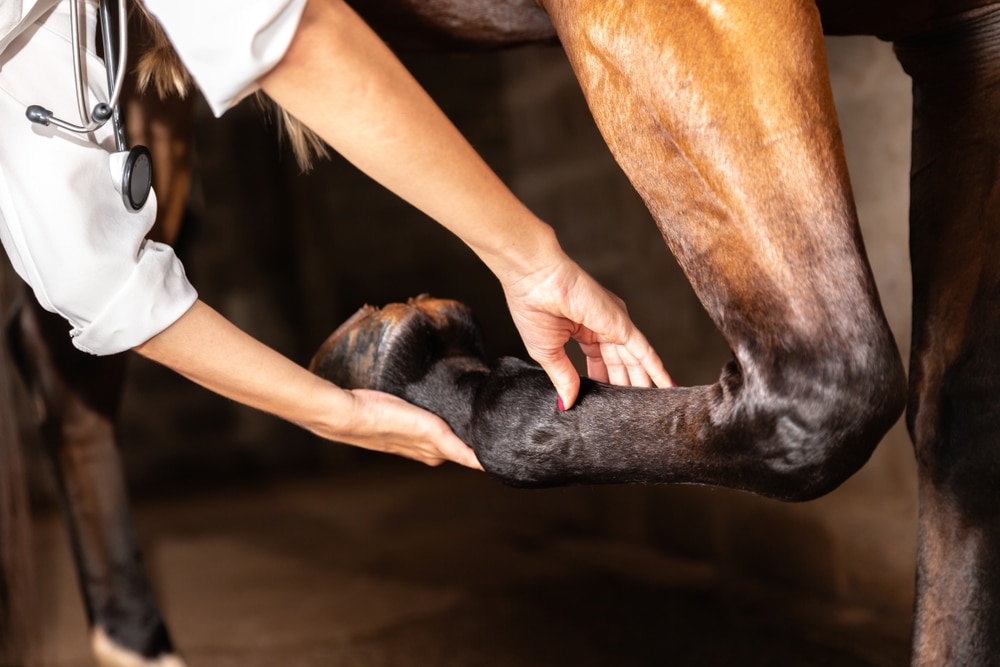The purpose of X-rays and flexion tests in pre-purchase examinations

Purchasing a horse is both an exciting and stressful time. Advice comes pouring in from every corner, often unsolicited. Taking out the guesswork is an all-important factor in making your investment. While pre-purchase exams can sometimes be a polarising topic, it is widely accepted and expected throughout the equine industry as the norm for buying horses and evaluating breeding stock.
It is understood during pre-purchase examinations, that it is not the responsibility of the veterinarian to “pass or fail” the horse, but to make recommendations on its current condition of health for what the prospective buyer intends to pursue. Horses that may not be suitable for high level competition might be an ideal partner for someone wanted to do low level dressage and pleasure riding. Many different things are checked during the exam such as eyes, teeth and heart rate, however the component that is largely focussed on is the horse’s soundness through flexion tests and X-rays.
These tests may not be carried out in the same inspection, and some believe that most horses will indicate to some degree when a flexion test is performed and is therefore less significant in the intel gathering process. However, it can be a useful prompt to investigate further when a lameness is detected via a joint. When the test is performed, the vet will hold one joint in a flexed position for one minute and then observe the horse’s gait as the handler trots the horse away. Depending on the observations, nerve blocks or X-rays may be ordered if the prospective buyer wants a clearer picture of what may be going on within the joint. Having said this, horses that do not respond to the test may still have arthritic changes and those that do respond may maintain soundness with no further issues.
X-rays will paint a clearer picture to investigate the presence of arthritis, bone chips or the deterioration of cartilage that could lead to it. If X-rays have previously been taken of the horse, current ones can be used to determine the advancement of any pre-existing changes within the joints. The owner can provide them or refer you to the veterinary clinic that produced them and for a fee, can be retrieved from their archives. The vet that is performing the exam can compare the frames and give advice on anticipated outcomes based on the interval of time between them. The vet may also give advice to manage or prevent any issues with their findings.
Overall, the process is designed to give transparency to both buyers and sellers and give the horse the best chance of success of finding a suitable home. When it’s time for you to start looking for your dream horse, do your research and speak to reputable veterinarians that specialise in pre-purchase exams for the level and discipline you aspire to – and remove the guesswork!